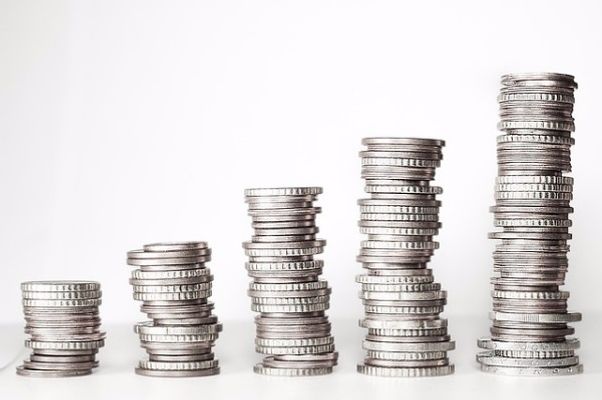1.1.6
Economic Issues 2
The Effect of Hyperinflation
The Effect of Hyperinflation
Inflation escalated in Germany to uncontrollable hyperinflation in 1923. By autumn, prices were rising daily or hourly.


Impact of the French occupation of the Ruhr
Impact of the French occupation of the Ruhr
- As Germany fell behind its reparation payments, France invaded the Ruhr (an industrial region in Germany).
- The German government ordered the workers to stop working (passive resistance).
- The government still had to pay unemployment and welfare benefits, but with no income from the Ruhr, hyperinflation simply got worse.


Stabilising German currency
Stabilising German currency
- Stresemann called off passive resistance in September. This was important. The German economy needed to be productive if a new currency were to work.
- The new currency was the Rentenmark. It was introduced in November 1923.
- 1 trillion marks were swapped for 1 Rentenmark. As people had confidence in the new currency, it was readily accepted.
- Hyperinflation was ended. But the memory of it haunted the Weimar Republic.


The losers of hyperinflation
The losers of hyperinflation
- Money lost all value.
- Cash savings and fixed incomes became worthless.
- Monthly salaries did not hold their value.
- This affected mainly the middle class
- People with assets or heirlooms sold them to bring in money.


The winners of hyperinflation
The winners of hyperinflation
- People who held money in foreign currencies (e.g. dollars) benefitted because foreign currencies’ purchasing power soared.
- People with fixed rents benefitted.
- The value of loans plummeted, helping borrowers. Some entrepreneurs took out loans to buy out competitors.
- Industrialist Hugo Stinnes used loans to buy competitors and other firms. By 1924, he owned 1,535 companies or 20% of German industries.
- The German government benefitted. It was 150,000 million marks in debt. This was equal to 15 pfennigs in Rentenmark.


Assessment of hyperfinflation
Assessment of hyperfinflation
- Peukert (1996):
- Different people from the same background were affected differently depending on where they lived, or their exact place in society.
- George Grosz: -‘Even an additional minute meant an increase in price … a rabbit…might cost two million marks more by the time it took to walk into the store'.
- Populist politicians offered simple explanations:
- ‘The crisis was...blamed on Jewish finance, the Versailles Treaty, Weimar democracy and socialists’.
The Invasion of the Ruhr 1923
The Invasion of the Ruhr 1923
The German government’s reaction to the occupation of the Ruhr triggered political unrest, social hardship and hyperinflation.


Motive behind the invasion
Motive behind the invasion
- Germany could not pay France and Belgium reparations.
- France and Belgium were dissatisfied and wanted to seize what was (in their eyes) theirs from the German economy.


Course of the invasion
Course of the invasion
- On 11 January 1923, French and Belgian troops invaded the Ruhr.
- They troops took control of all factories, mines, steelworks, railways and rolling stock throughout the Ruhr.
- On 19 January, the German government ordered passive resistance. The Germans refused to produce or transport goods. Communications were cut. Economic activity halted.
- The French and Belgians shot 132 Germans dead during their occupation. They also removed 150,000 people from the region for refusing to obey orders.


End of the crisis
End of the crisis
- On 26 September, Gustav Stresemann (the new German Chancellor) ended the campaign of passive resistance.
- The Rentenmark was introduced and the currency stabilised.
- But the invasion led to considerable political unrest and social hardship in Germany.
1The Weimar Republic 1918-1933
1.1Establishment Of The Weimar Republic 1918-1924
1.1.1Post WW1
1.1.2Weimar Constitution
1.1.3Peace Settlement
1.1.4End of Topic Test - Germany Post WW1
1.1.5Economic Issues
1.1.6Economic Issues 2
1.1.7Social Issues
1.1.8End of Topic Test - Economic & Social Issues
1.1.9Extremist Threats
1.1.10Extremist Threats 2
1.1.11End of Topic Test - Extremist Threats
1.1.12Political Instability & The Invasion of the Ruhr
1.1.13Weimar Government by 1924
1.1.14End of Topic Test - Weimar Government by 1924
1.1.15A-A* (AO3/4) - Germany Post WW1
1.2The 'Golden Age' Of The Weimar Republic 1924-1928
1.2.1Economic Developments
1.2.2Industry & Agriculture
1.2.3End of Topic Test - Economic Developments
1.2.4Social Developments
1.2.5Social Developments 2
1.2.6End of Topic Test - Social Developments
1.2.7Political Parties
1.2.8Political Stability
1.2.9End of Topic Test - Weimar Politics
1.2.10Germany's International Position
1.2.11Germany's International Position 2
1.2.12End of Topic Test - International Position
1.2.13A-A* (AO3/4) - The Weimar 'Golden Age'
1.3The Collapse of Democracy 1928-1933
1.3.1The Impact Of The Depression
1.3.2Politics After The Depression
1.3.3The Appeal Of Extremism
1.3.4End of Topic Test - The Depression & Politics
1.3.5'Backstairs Intrigue'
1.3.6'Backstairs Intrigue' 2
1.3.7End of Topic Test - Backstairs Intrigue
1.3.8Political Developments
1.3.9The State by March 1933
1.3.10End of Topic Test - Political Developments
1.3.11A-A* (AO3/4) - The Collapse of Democracy
2Nazi Germany 1933-1945
2.1The Nazi Dictatorship 1933-1939
2.1.1Hitler's Consolidation Of Power
2.1.2The Terror State
2.1.3End of Topic Test - Consolidation of Power
2.1.4Opposition
2.1.5Propaganda
2.1.6A-A* (AO3/4) - Terror State & Propaganda
2.1.7End of Topic Test - Propaganda
2.1.8Economic Policies
2.1.9Economic Policies 2
2.1.10Impact Of Economic Policies
2.1.11Impact Of Economic Policies 2
2.1.12End of Topic Test - Economic Policies
2.1.13Social Policies
2.1.14Social Policies 2
2.1.15Volksgemeinschaft
2.1.16End of Topic Test - Social Policies
2.1.17A-A* (AO3/4) - Economic & Social Policies
2.2The Racial State 1933-1941
2.2.1The Radicalisation Of The State
2.2.2Anti-Semitism
2.2.3Development Of Anti-Semitic Policies
2.2.4Development Of Anti-Semitic Policies 2
2.2.5End of Topic Test - Anti-Semitism
2.2.6Treatment of the Jews in the Early Years of War
2.2.7Deportation & Anti-Semitism Evaluation
2.2.8End of Topic Test - Early Treatment of the Jews
2.2.9A-A* (AO3/4) - The Racial State
2.3The Impact Of War 1939-1945
2.3.1Home Front
2.3.2Impact On Society
2.3.3Impact On Society 2
2.3.4End of Topic Test - Impact of the War
2.3.5War Economy
2.3.6War Economy 2
2.3.7Policies Towards The Jews & Untermenschen
2.3.8A-A* (AO3/4) - Impact of the War
2.3.9End of Topic Test - War Economy
2.3.10Opposition
2.3.11Opposition 2
2.3.12Nazi State by 1945
2.3.13End of Topic Test - Opposition
2.3.14A-A* (AO3/4) - Opposition & The State in 1945
Jump to other topics
1The Weimar Republic 1918-1933
1.1Establishment Of The Weimar Republic 1918-1924
1.1.1Post WW1
1.1.2Weimar Constitution
1.1.3Peace Settlement
1.1.4End of Topic Test - Germany Post WW1
1.1.5Economic Issues
1.1.6Economic Issues 2
1.1.7Social Issues
1.1.8End of Topic Test - Economic & Social Issues
1.1.9Extremist Threats
1.1.10Extremist Threats 2
1.1.11End of Topic Test - Extremist Threats
1.1.12Political Instability & The Invasion of the Ruhr
1.1.13Weimar Government by 1924
1.1.14End of Topic Test - Weimar Government by 1924
1.1.15A-A* (AO3/4) - Germany Post WW1
1.2The 'Golden Age' Of The Weimar Republic 1924-1928
1.2.1Economic Developments
1.2.2Industry & Agriculture
1.2.3End of Topic Test - Economic Developments
1.2.4Social Developments
1.2.5Social Developments 2
1.2.6End of Topic Test - Social Developments
1.2.7Political Parties
1.2.8Political Stability
1.2.9End of Topic Test - Weimar Politics
1.2.10Germany's International Position
1.2.11Germany's International Position 2
1.2.12End of Topic Test - International Position
1.2.13A-A* (AO3/4) - The Weimar 'Golden Age'
1.3The Collapse of Democracy 1928-1933
1.3.1The Impact Of The Depression
1.3.2Politics After The Depression
1.3.3The Appeal Of Extremism
1.3.4End of Topic Test - The Depression & Politics
1.3.5'Backstairs Intrigue'
1.3.6'Backstairs Intrigue' 2
1.3.7End of Topic Test - Backstairs Intrigue
1.3.8Political Developments
1.3.9The State by March 1933
1.3.10End of Topic Test - Political Developments
1.3.11A-A* (AO3/4) - The Collapse of Democracy
2Nazi Germany 1933-1945
2.1The Nazi Dictatorship 1933-1939
2.1.1Hitler's Consolidation Of Power
2.1.2The Terror State
2.1.3End of Topic Test - Consolidation of Power
2.1.4Opposition
2.1.5Propaganda
2.1.6A-A* (AO3/4) - Terror State & Propaganda
2.1.7End of Topic Test - Propaganda
2.1.8Economic Policies
2.1.9Economic Policies 2
2.1.10Impact Of Economic Policies
2.1.11Impact Of Economic Policies 2
2.1.12End of Topic Test - Economic Policies
2.1.13Social Policies
2.1.14Social Policies 2
2.1.15Volksgemeinschaft
2.1.16End of Topic Test - Social Policies
2.1.17A-A* (AO3/4) - Economic & Social Policies
2.2The Racial State 1933-1941
2.2.1The Radicalisation Of The State
2.2.2Anti-Semitism
2.2.3Development Of Anti-Semitic Policies
2.2.4Development Of Anti-Semitic Policies 2
2.2.5End of Topic Test - Anti-Semitism
2.2.6Treatment of the Jews in the Early Years of War
2.2.7Deportation & Anti-Semitism Evaluation
2.2.8End of Topic Test - Early Treatment of the Jews
2.2.9A-A* (AO3/4) - The Racial State
2.3The Impact Of War 1939-1945
2.3.1Home Front
2.3.2Impact On Society
2.3.3Impact On Society 2
2.3.4End of Topic Test - Impact of the War
2.3.5War Economy
2.3.6War Economy 2
2.3.7Policies Towards The Jews & Untermenschen
2.3.8A-A* (AO3/4) - Impact of the War
2.3.9End of Topic Test - War Economy
2.3.10Opposition
2.3.11Opposition 2
2.3.12Nazi State by 1945
2.3.13End of Topic Test - Opposition
2.3.14A-A* (AO3/4) - Opposition & The State in 1945
Unlock your full potential with Seneca Premium
Unlimited access to 10,000+ open-ended exam questions
Mini-mock exams based on your study history
Unlock 800+ premium courses & e-books